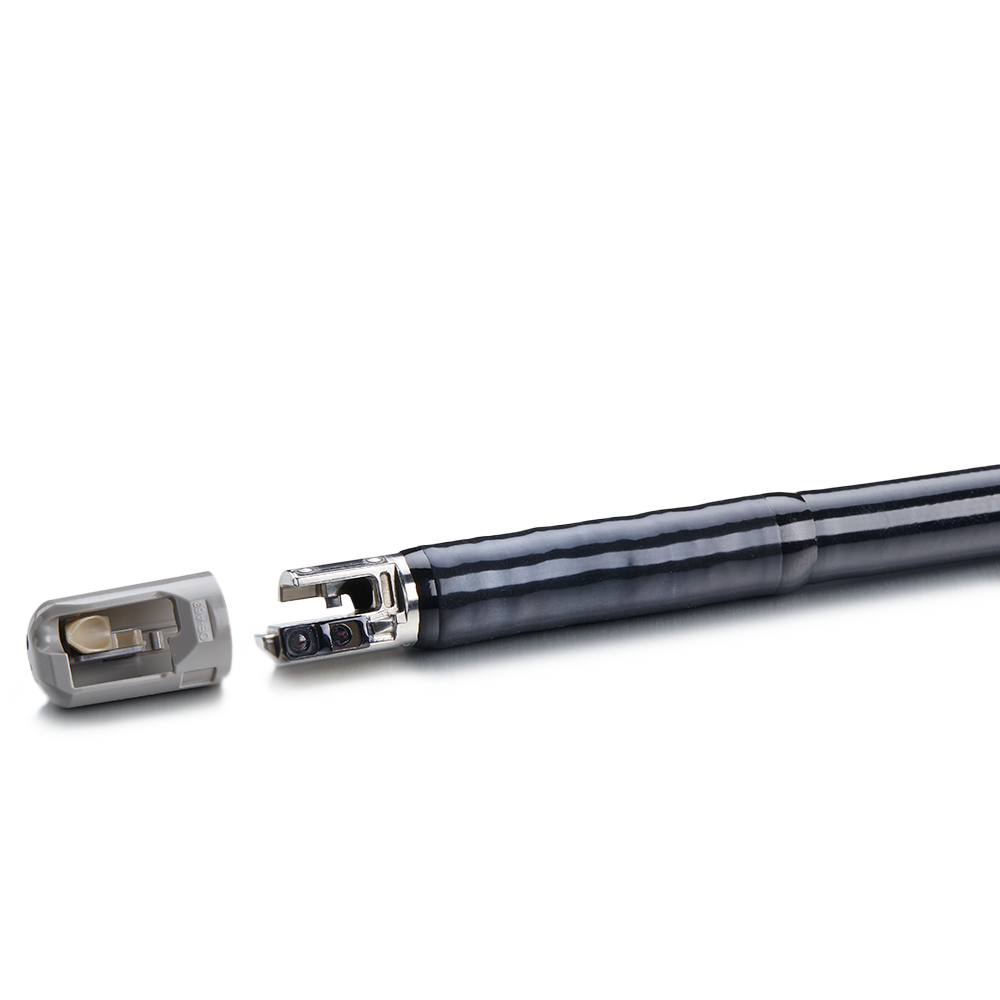I-DEC™ Duodenoscope
The I-DEC™ duodenoscope with its disposable elevator cap, reduces the risk of cross-contamination in ERCP through disposal of the device component most likely to harbor bioburden after cleaning.
Simply detaching and discarding the disposable elevator cap after each use greatly reduces the effort required for thorough reprocessing without compromising maneuverability or image quality.

Disposable Elevator with Reusable Upper Case
Designed for smooth, precise steering of therapeutic devices and built with durable materials, the disposable elevator cap delivers the maneuverability of a reusable device.
Disposable Elevator Cap
Combining a reusable endoscope with the DEC guarantees the benefits of a new elevator and the handling ease of a reusable duodenoscope in each procedure.

Outstanding Visulization
Expect outstanding visualization supported by a brighter HD+ image and finely differentiated colors and contrasts for proper positioning to facilitate easier cannulation.



Reduced Risk of Cross-Contamination
The DEC™ Disposable Elevator Cap ensures a reduced risk of cross-contamination by improving surface access for distal end cleaning without compromising therapeutic performance.
The single patient use distal end cap with integrated elevator eliminates the need for elevator reprocessing.The disposable cleaning brushes, designed specifically for PENTAX Medical, meet high quality standards and have been tested to reduce residual debris compared to conventional brushes.
PENTAX Medical recommends reprocessing the DEC™ Duodenoscope with PROfILE Disposable Cleaning Brushes.

Slim DEC™ Duodenoscope
This unique ERCP solution for pediatric and adult patients with narrow anatomy features a slimmer endoscope to facilitate cannulation in smaller patients and those with challenging upper GI tracts.
It’s a slimmer duodenoscope with consistent therapeutic performance achieved through a combination of a narrow insertion tube and a narrow, rigid distal width while maintaining an adequate working channel to support therapeutic intervention.
The duodenoscope provides excellent visualization supported by a combination of HD imaging, a 15° retroflexed view, and a more flexible insertion tube for proper positioning to cannulate during ERCP in narrow anatomies.

Prof. Dr. Marco Bruno, Head of the Department of Gastroenterology & Hepatology, Erasmus University Medical CentreA solution to the risk of infection, is to modify current endoscopes so that they have disposable parts. Especially the parts that are most susceptible to contamination.